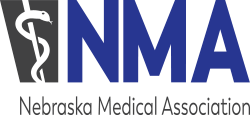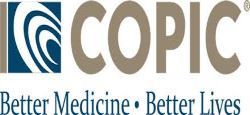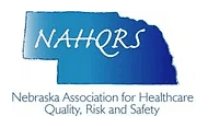
Diagnostic errors have been identified as a leading cause of preventable adverse care events.1 Diagnostic error is defined as the failure to: establish an accurate and timely explanation of the patient’s health problem(s), or communicate that explanation to the patient.2 Research has demonstrated that annually, 1 in 20 outpatients in the U.S. experiences a diagnostic error, with greater than 50% having the potential to lead to severe harm3 or death. Patients might experience harm related to a lack of or a delay in receiving appropriate treatment, receiving unnecessary or harmful treatment, or financial or psychological consequences of an incorrect diagnosis.1 It is estimated 40,000 to 80,00 deaths can be attributed to diagnostic error each year in this country,4 and that most people will suffer a diagnostic error in their lifetime.3 Fifty-five percent of patients indicate diagnostic errors were a chief concern during outpatient visits.5
Making an accurate or timely diagnosis is a collaborative process that involves information gathering and clinical reasoning to determine the patient’s condition.1 An accurate diagnosis requires interpreting assessment findings in the context of each individual patient6 and is made additionally challenging given that presenting symptoms are highly variable and may oftentimes not be directly related to the condition that was missed.7 A provider’s clinical reasoning can be influenced by patient factors including how patients present their symptoms and concerns,7 and normal variations in test results that are influenced by body mass, age and pregnancy status which have implications for determining normal, borderline, or abnormal findings depending on other aspects of the patient.6 Clinical reasoning can also be affected by environmental factors such as time constraints6,7,8,9 that impede thorough information gathering, and interruptions such as telephone calls that avert attention away from the patient.6 Process breakdowns in the patient-provider clinical encounter also influence accurate and timely diagnosis. These could involve problems with history taking and physical examination,7 performance and/or interpretation of diagnostic tests,7,8,10 follow-up and tracking of diagnostic information,7,8,10 and review of previous documentation.7
Studies examining diagnostic error have demonstrated multiple causes involving system-related factors such as equipment problems, technological failures, and organizational flaws;6 and cognitive factors influencing a provider’s assessment, often referred to as cognitive error – errors in considering a diagnosis6,10,11 and giving appropriate weight to the various differential diagnoses.9,10 Cognitive error can result from knowledge deficits, deficient data gathering, and inaccurate clinical reasoning that leads to erroneous verification of diagnostic hypotheses.6 Evidence suggests that the majority of cognitive errors in diagnosis occur when the provider is integrating the patient’s history and assessment findings with his/her medical knowledge; a process that is considered by some to be automatic and subconscious.11
Various sources of bias may influence cognitive processes in decision making and impact how a provider observes and perceives data, interprets test results and reaches conclusions.9 Biases may involve factors related to the specific case and analysis (including the data, reference materials, and contextual information); the provider’s education and training, past experiences, organizational factors, and other personal factors and characteristics related to human nature.9 Diagnostic errors can also be attributed to cognitive biases such as availability and confirmation biases.6 Availability bias results from a provider’s overestimation of the likelihood of a diagnosis based on recent experience with a clinical problem that makes it easily come to mind.12
Mitigating the risk of diagnostic error requires that clinicians acknowledge the existence of biases and begin to examine their sources to identify actions that can be taken to minimize their impact.9 Learning and improving systems will not occur if one takes a blame and shame approach.13 Rather, “preventive interventions must focus on common contributory factors, particularly those that influence the effectiveness of data gathering, and synthesis in the patient-practitioner encounter,”7 and steps need to be taken that will result in providers focusing solely on relevant data.9 Strategies might include education and training, consultation (expert consults, second opinion), and feedback (rapid follow up to mitigate harm and prevent future errors).11 Clinical reasoning tools allow clinicians to understand how decisions are made and provide cognitive strategies to mitigate risk.14 Creating systematic approaches through the use of checklists5,8,10,14 or automated decision support tools10,11 that make these resources more accessible at the point of care will increase the likelihood that they will be used more frequently.11 Closed-loop communication occurs when every test result is sent, received, acknowledged, and acted upon without failure. Implementing strategies that enhance tracking of patient follow up and diagnostic test results15,16,17 is another critical component in reducing error.
Empowering and engaging patients in the diagnostic process can further enhance risk mitigation strategies.7 Resources are available with which clinicians can partner with patients and their families to make clinic visits more effective and efficient by engaging the patient in the clinical encounter as a member of the team.5,14 Having patients prepare for medical appointments by bringing completed worksheets with information about their concerns and symptoms allows clinicians to review the information aloud with the patient and verify their own understanding of the reason for the patient’s visit.5,14 Engaging patients in conversation and providing written materials about what to expect after the visit empowers patients to ask questions about the plan of care, and follow up if they have not received results or other information in the agreed upon timeframe – ensuring that closed-loop communication occurs.5,14
Diagnostic error can result from cognitive and system failures. A multi-faceted approach is required to mitigate this risk and improve patient safety and outcomes.
References
- Institute of Medicine. (2000). To Err Is Human: Building a Safer Health System. Washington, DC: The National Academies Press.
- National Academies of Sciences, Engineering, and Medicine. (2015). Improving diagnosis in health care. Washington, DC: National Academies Press.
- Singh, H., Meyer, A., Thomas, E. (2014). The frequency of diagnostic errors in outpatient care: estimations from three large observational studies involving US adult populations. BMJ Qual Saf; 23: 727–731.
- Institute of Medicine Committee on Diagnostic Error in Health Care; Board on Health Care Services.(2015). Improving diagnosis in health care. The National Academies of Sciences, Engineering, and Medicine. Washington (DC): National Academies Press.
- Agency for Healthcare Research and Quality. (2018). Guide to improving patient safety in primary care settings by engaging patients and families. Available at: https://www.ahrq.gov/patient-safety/reports/engage.html
- Van den Berge, K., Mamede, S. (2009). Cognitive diagnostic error in internal medicine. European Jnl Int Med; 24: 525-529.
- Singh, H., Giardina, T., Meyer, A., Forjuoh, S., Reis, M., Thomas, E. (2013). Types and origins of diagnostic errors in primary care settings. JAMA Intern Med; 173(6): 418-425.
- Hussain, F., Cooper, A., Carson-Stevens, A., Donaldson, L., Hibbert, P., et al. (2019). Diagnostic error in the emergency department: Learning from national patient safety incident report analysis. BMC Emergency Medicine; 19:77.
- Dror, I. (2020). Cognitive and human factors in expert decision making: Six fallacies and the eight sources of bias. Anal. Chem; 92: 7998-8004.
- Schiff, G., Hasan, O., Kim, S., Abrams, R., Cosby, K., et al. (2009). Diagnostic error in medicine: Analysis of 583 physician-reported errors. Arch Intern Med; 169(20): 1881-1887.
- Berner, E.S., & Graber, M.L. (2008). Overconfidence as a cause of diagnostic error in medicine. The American Journal of Medicine; 121(5A): S2–S23.
- Mamede, S., van Gog, T., van den Berge, K., Rikers, R.M., van Saase, J., van Guldener, C., Schmidt, H. (2010). Effect of availability bias and reflective reasoning on diagnostic accuracy among internal residents. JAMA; 304(11): 1198-2013.
- Shannon, S.E. (2015). Ebola, team communication, and shame: But shame on whom? American Journal of Bioethics;15(4): 20–5.
- Society to Improve Diagnosis in Medicine. Toolkits. Available at: https://www.improvediagnosis.org/toolkits/
- White, B. (20020. Four principles for better test-result tracking. Family Practice Management; 9(7): 41-44. Available at: https://www.aafp.org/fpm/2002/0700/p41.html
- The American College of Obstetricians & Gynecologists, Committee on Patient Safety and Quality Improvement. Tracking and reminder systems. Committee Opinion; 546: 1-3. Available at: https://www.acog.org/clinical/clinical-guidance/committee-opinion/articles/2012/12/tracking-and-reminder-systems
- Wenske, W., & Hale Brockway, L. (2019).Tracking patient follow up and diagnostic test results. CME Course.







